This was the moment I realized the end was in sight.
It was February 21, 2021. I came across a big stand of hand disinfectant on sale at the grocery store. A sign said “Manager’s Special” in front of a huge stack of unsold produce. It seems nobody was buying hand disinfectant anymore. So they reduced the price, put it on sale, and hoped they could be rid of it —
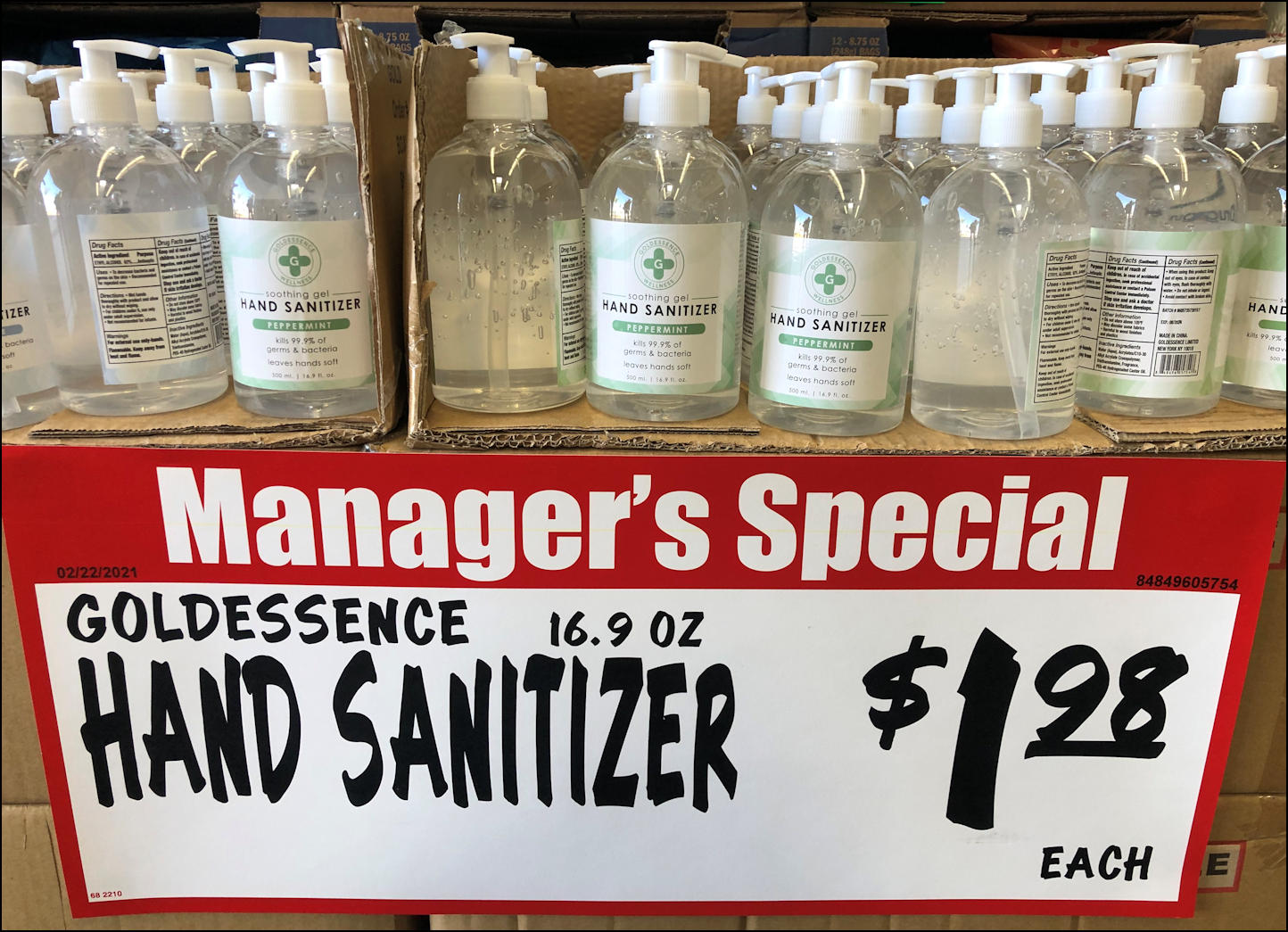
Plunging demand for hand sanitizer in grocery stores by late February 2021.
This was much different than a year earlier when the outbreak began, and stores could not stock enough hand sanitizer to meet demand. The fear the Coronavirus held on people was ebbing and would soon be gone, and now demand for protective gear was falling precipitously. Before official government spokesmen or public health plaudits would admit it, I knew what was happening.
It was almost March 2020. The COVID infection numbers had plummeted. Vaccines were slowly but surely making their way into the arms — and immune systems — of the populace. The pandemic was at last ebbing. Finally! It had been a long struggle. A hard slog from March 2020 to March 2021.
Over the past twelve months the COVID infection numbers would go up, and the numbers would go down — there seemed no real rhyme or reason to any of it, and I had given up speculating on why. Maybe in the future historians would be able to explain things better. It has been obvious to me since the beginnings almost a year ago that the best minds in public health did not really know what was going on or why. Other than shutting down society, urging people to stay home, and trying to get everyone to wear a mask, health departments did not seem to have much to offer (with the notable exception of vaccines).
Speaking of vaccines, three days later, on February 22nd, I made an appointment for my vaccine shot. On March 1st, I had the first shot in my arm —

On March 24, 2021 I would get the second shot. After another two more weeks of allowing my body to process a vaccine developed and manufactured by Pfizer Corporation, I would be fully vaccinated against the SARS-CoV-2 virus.
I have written four pandemic diaries over the past year, and now I will write one more. I will try in this essay to sum up my Coronavirus experience, and to make sense of what happened to me and my family — how we reacted to the crisis and tried to adapt. I want to try and find the lessons the pandemic has taught me, so I won’t forget them. For twelve months we have endured quarantine and government “lockdowns,” but that looks to change soon. The present is a time of transition —
“From Chrysalis to Butterfly”
December 31, 2020
— where we are no longer in full-blown pandemic panic, but not yet back to normal life either.
Soon many will re-emerge into workplaces where we will see our co-workers for the first time in a year. We have hardly seen each other since the beginning of the pandemic. It will be something to look forward to, for sure. In particular, I am eager to meet again a fellow English teacher who is also the coach of the cross country team. I ran across him out on the road — I was biking, he was running — on almost the first days of the pandemic twelve months ago.
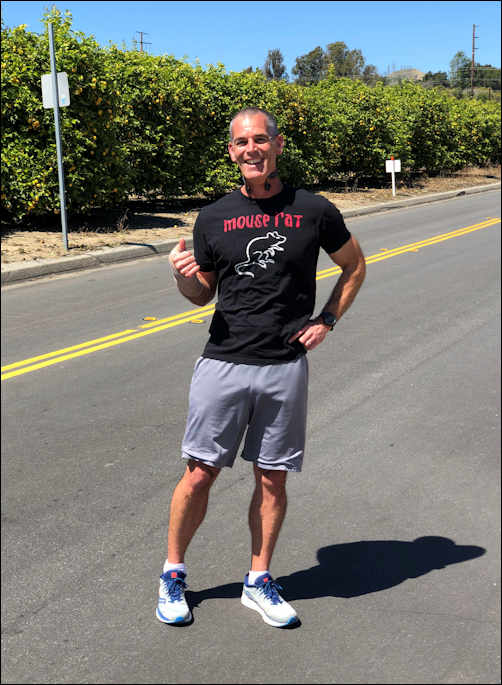
A serendipitous meeting amid the citrus groves of east Ventura on March 27, 2020.
I have heard that my co-worker has dealt with all the tedium and enforced downtime of the quarantine by running more than ever, and also swimming nearly everyday in the ocean. In the past 12 months, I imagine he has run and swam many many miles. I have exercised even more than he has, I suspect; both of us will be in some of the best physical condition of our lives.
In more normal times neither he nor I have the time or energy to devote so much time to exercising like this, but in the past year we did — and we took full advantage. This was a wonderful aspect to a difficult time, and it made all the difference. Look at my first Pandemic Diary
“Pandemic Diary, I: The Crucible — Hard Times and Stress; Mental and Physical Strength”
June 18, 2020
I could see almost from the very beginning what was happening. So I took steps to compensate. When my friend and I finally meet again face-to-face at work, we will be suntanned and steady — both of us lean and mean, taut and strong — ready for what comes next. Because of how we spent the last year. The conscious choices we made.
No matter how tough life gets, if you can get outside, be active, do exercise, and enjoy others — then you can hang tough. You can even thrive. This was how our hunter-gatherer ancestors lived for tens of thousands of years.
In contrast, there will be adults emerging from quarantine into the workaday world in the opposite condition. They will be fifteen pounds heavier, just barely hanging on, with their nerves frayed and mental health stressed. They will be taking anxiety and/or depression medication. They will brag about how they stayed indoors for almost 12 months to “fight the pandemic through social distancing!” They spent much of the past year hunched over their smartphone fretting about the 2020 election and Donald Trump, or glued to the screen following “racial justice” protests or contentious pandemic politics.
They will be in bad shape, physically and emotionally. They will be pasty in appearance. They will be soft in body. They will be heavier than before. They have not thrived in the past 12 months. They will crawl across the one year anniversary of COVID, having barely made it.
So there were those who chose to adapt to quarantine and make the best of it, and those who froze in fear and pain and hardly ever left their homes. I contemn the latter, but I applaud the former.
Yes, I noticed. I have seen those who tried to rise above the malaise and tedium of quarantine. As the government closed workout gyms and yoga studios during the pandemic, I have seen exercise classes move outdoors. I saw groups of people in the public parks doing yoga poses or lifting kettlebells or practicing jiujitsu under the tutelage of a teacher. “Good for them!” I thought to myself as I drove by them. “Good for them!” At least they’re trying.
Then there were those — not much inclined to physical exercise, even before the pandemic — who almost never went outside in the past year. “Stay home and stay safe!” they urged online, and they named and shamed via social media those who violated what they saw as quarantine protocols. Such people were more than a bit neurotic and high-strung to begin with — they were struggling — and now it was worse.
Take a look at Maya Kosoff’s posting last week, for example —
“I Hate Talking About the ‘Pandemic Wall’”
by Maya Kosoff
Maya is in horrible shape after twelve months of quarantine, barely hanging in there. She squarely blames the “state and federal governments” for her emotional distress. It is a coping mechanism. The nexus of control in her mental health lies with external forces. She is not responsible for her peace of mind — she is a “victim,” in a country which is increasingly dedicated to blaming external forces and other people for their discontent. For too many, whining about their poor mental health and essential victimhood had become almost a bragging point. They have little control over their peace of mind. They are angry, and their anger seems to rule them.
But Maya is only around 30-years of age, and maybe she is still too young to know that anger is mostly a waste of time and energy. You are angry at other people — or “institutions,” or “society” — but that anger mostly just poisons your own life. Other people don’t care about you or your anger. Not really. It is a drama you create mostly in your own head. It exhausts you. Look at Maya. She is an orthodox representative of many journalists of her generation: overeducated, underemployed, unsettled, unhappy; very liberal, very angry, and very online. Saddled with student-debt. Complaining constantly on social media. In 2020, at least, during the pandemic, Maya was almost unhinged. She was hardly alone.
For my part, I had left social media and its poisonous influence years ago —
“Breaking Up With Social Media”
March 8, 2018
But Maya and her friends were still there, stewing in their discontent. Does it help them? Are they better off than before?
In my view, they are worse off. Events control them; they don’t control events. They become “victims.” They squirm stuck in discomfort and disappear down the rabbit hole of their rage and hours and hours spent online. They spin their wheels; they get in their own way. The echo chamber of social media makes it worse by amplifying the zeitgeist: negativity is the norm, groupthink runs rife. You can bitch and moan and denounce others. Anger feels good. It can keep you warm temporarily. There is solidarity in shared anger online.
Offline life is not that way. If you made half the hostile remarks in real life that you make on social media, you would get punched in the nose. In the long run anger hollows and burns you out. That is reality. The real world is different.
This is one of the reasons younger people fared worse than older people during the Coronavirus pandemic of 2020, in my opinion. Older people have more life experience and resilience. They can generally regulate their emotions better. They can see the bigger picture and understand nuance. They have more patience and internal resources. Maybe they have more wisdom. With more wisdom a person can make choices to adopt a more positive attitude. With a more positive mindset comes a healthier lifestyle.
In the past twelve months, I had my own reasons to be angry about government policy or whatever — and my daughters surely suffered from having the world shut down by executive fiat. There were significant tensions with my wife, and the stagnating and bored kids and their fights with mom made for tough times. Day after day was the same. Month after month the pandemic continued.
The crisis dramatically entered my own household on Wednesday January 20, 2021 when my wife tested positive for COVID. She immediately moved to our guest bedroom where for 10 days she would be in what I called “COVID jail.” She never had any noticeable symptoms or felt the least bit sick, and nobody else in our family ever tested positive for the SARS-CoV-2 virus, even as we were all in close contact. So strange. I wondered if my wife really did have the virus, or if she suffered a false positive test result. A month later she took a test to see if her body had antibodies for the SARS-CoV-2 virus, and the test said she didn’t — throwing further doubt on her COVID positive test result. Whatever. I knew several people who did come down with COVID, but none of them ever came close to losing their lives. My stepmother was on death’s doorstep from cancer when she contracted COVID in her skilled nursing facility, but it did not seem to hurt her health. She died soon after of her cancer, COVID seeming to have not affected her at all —
“In Memoriam: Trudy Rideout, My Stepmother, Died Today”
October 6, 2020
Yet my stepmother never showed any symptoms from the Coronavirus. Why?
If COVID were more like Bubonic Plague, Smallpox, or something which was essentially a death sentence, I would have been more sympathetic to never leaving the house or seeing my friends out of fear of it, or closing down the beaches, parks, and businesses in its name — or shuttering the schools indefinitely. As a public school teacher, I was ready to go back to work. “Limit the risk as much as you can, and get on with it,” I thought to myself. But my bosses chose to keep the schools closed. Nobody particularly cared what I thought. Since I work for the government, I knew first-hand how mindless and inane official proclamations can be, and so I felt free to mostly ignore the aggressive COVID communitarianism which ran rampant during the pandemic. I would asses the situation and make my own choices.
I chose almost immediately to take a much more active role in the education of my daughters. Look at these two postings from almost the first days of the pandemic —
“Coronavirus-Crisis: Home School, Day One”
March 19, 2020
“A Crisis is a Terrible Thing to Waste”
March 12, 2020
— I had an adrenaline-aided energy at that time to respond to the unexpected events of March 2020, an energy which was not there six, nine, or twelve months later when as a parent I was plain exhausted. The pandemic would become a marathon, not a sprint. I also facilitated a book club with my older daughter and her friends and tried to make up for what their public schools were not getting done —
“The Blessings of Adversity — Control What You Can Control”
April 25, 2020
— that was well worth my time! I paid next to no attention to the “distance learning” the schools gave my daughter. It did not seem worth paying attention to. Mostly I minded my own business and got on with it. I did what I could where I could, and everything else I mostly ignored.
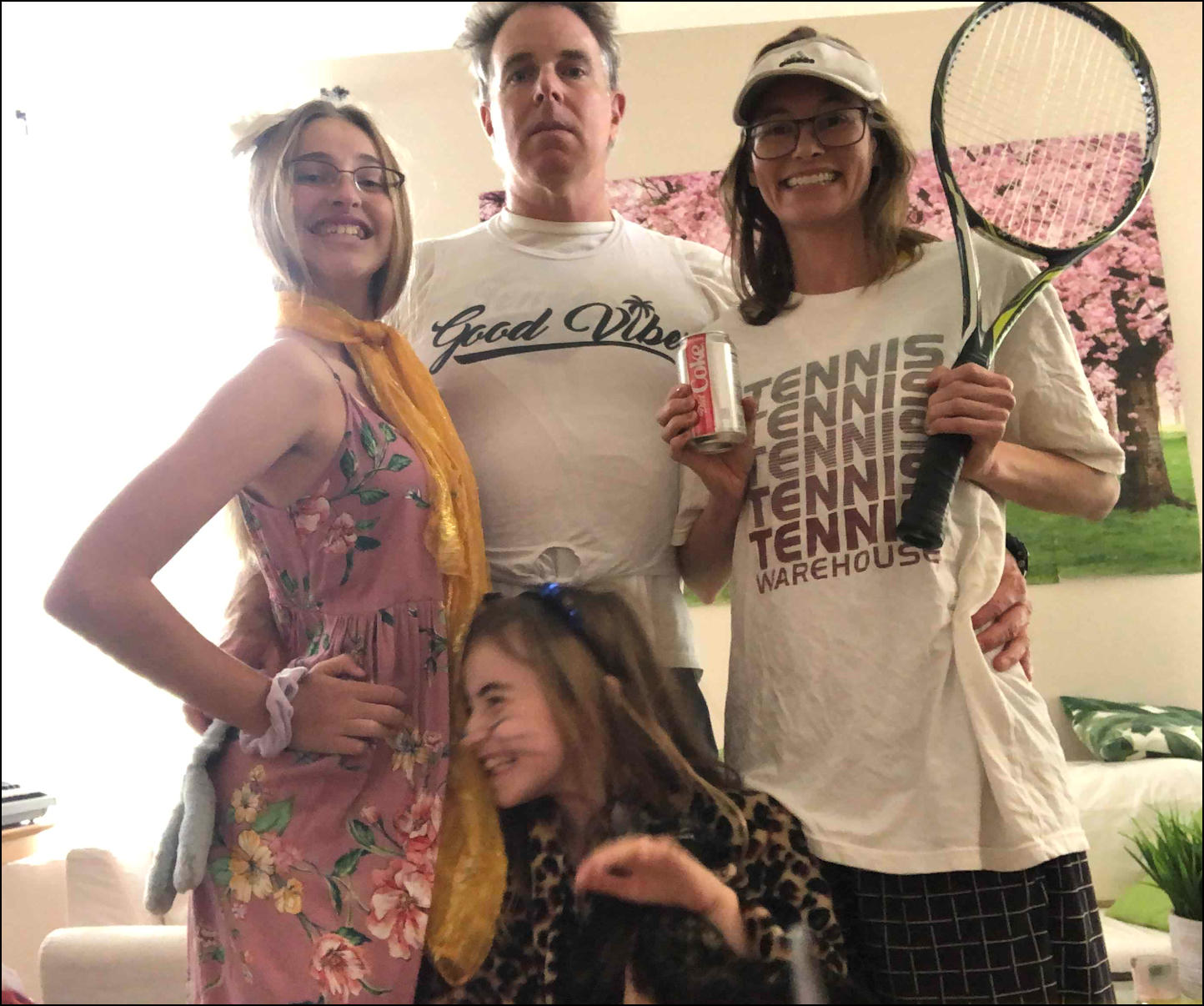
I don’t wish to minimize the challenges the lockdowns brought to my family. All four of us during this pandemic saw therapists to help deal with the stresses of having our lives so disrupted, even if it was only over the Internet on Zoom, even if it was only one or two sessions.
My younger daughter, 10-years old, was the most starkly affected. She was too young to be able to manage her own friendships, as she depended on mother to make “play dates” for her, or soccer teams and school to provide for socialization and access to friends. In the quarantine, all those were gone. Her peer groups — so important to young people — lay idle. Her friendships languished over the months and started to wither and die from lack of attention. My younger daughter was in crisis after six months of quarantine. As a consequence, she attached herself to me like a barnacle. She was seriously in need, so I gave her whatever she wanted. We read book after book after book together. She was bored out of her mind, furiously arguing with her mom too often. We just got in my car and drove somewhere. I bought her a treat, and we sat in the parking lot and read or talked. We were out of the house, and that was a blessing. It worked. So we did it. Frequently.
“Dear Elizabeth…”
November 24, 2020
A small but telling anecdote: during this time my daughter asked if she could sleep on the floor in my room at night, like when she was a little kid. Sure, I responded, you can sleep here. It was like she was regressing to an earlier stage of childhood development under the isolation and tedium of the quarantine. In a strange and disorienting time my daughter seemed to need reassurance, love, and security, and I would give it to her, although she became like a barnacle attached to my hip. If the rest of the adult world had abandoned my daughter, I would not. I was her father, friend, coach, teacher, tutor, disciplinarian, and confidant. But it was a bit overwhelming. Emotionally it drained me. My buddies who did not have children fared much better during the quarantine. Their lives remained mostly the same. Those with children struggled. The children themselves suffered.
Yes, I was outdoors often and exercised numerous times per day, but my daughters and wife took a huge chunk of my time, too. Exercise outdoors and literature with my daughters was how I largely spent 2020.
My older daughter was 13-years old, and she did better. She could text her friends and communicate with them via technology, and she claimed that made a huge difference. My older daughter claimed she would have been “lost” during the pandemic without the technological lifeline to her peer groups. She spent huge amounts of time in her room on her smartphone and Chromebook, and I worried about her. School was cancelled and her club soccer team languished and finally went defunct. I tried to get my daughter to develop new interests and to use all the free time. I urged her — and everyone else — to make a deep-dive into a passion-project and thereby replace what was taken away with something new and exciting —
The “Hard Yards” — Any Serious Endeavor Worth Doing Should Be Difficult
August 17, 2020
I tried to jumpstart new projects with my older daughter, hoping that with my help it would take. I had her start a blog, like her father’s, and encouraged her to write down her thoughts and emotions on almost a daily basis. She made a few entries at my insistence, but no more. I set up a spreadsheet to track her workouts and offered to pay my daughter if she swam laps daily with me. She was not interested. I borrowed a DSLR camera for us, signed up and paid for an online class, and offered to make a serious study of photography with her. She did not want to. “Take up surfing! Or teach yourself Japanese or whatever. Use your time! Don’t waste it!” I urged her. No go. During the pandemic I think there was something in the air — some negative psychic energy suck — which left many exhausted and unmotivated, and my daughter was infected by it. She spent huge chunks of time in her bed watching YouTube and TikTok videos.
I had previously done a pretty good job of limiting my daughter’s screen time, but the pandemic blew that policy apart. They were now spending huge amounts of time in front of screens. You can see my frustration with that here:
“‘Kill your TV’? I Count Myself ‘Killed’ by YouTube”
October 1, 2020
I sometimes wondered if some cynical technology mogul in China engineered this virus and unleashed it on the world to create an outbreak, and thereby get young Americans even MORE addicted to screens and technology than they were before quarantine. If so, it was a total success! If America was a lonely place with so many isolated in their homes and mesmerized by smartphones and video games before the pandemic, Americans were even lonelier and more atomized screen-zombies during it. I hated this trend but seemed powerless to stop it under my own roof.
After some ten months of quarantine my older daughter started picking at her face, causing inflammation and a skin rash around her eyebrows and hairline. She claimed it was just a nervous habit, but I was pretty sure this was because of the boredom, tedium, and loneliness of the quarantine. It was worrisome. She so missed her friends, and the normal social life of teenagers: her school, her soccer team, all gone.
What could I do? My daughter was already at that stage of sullen adolescence when a suggestion by a parent to do something is often automatically rejected. I usually just let my daughter be, because I did not want to make things worse by insisting she do something and then arguing about it. I avoided fights with her. I tried to keep it positive. I urged her to distinguish between what was important and what was not, and to seek to take full advantage of the opportunities and resources available for what was important —
“‘Why We Send You to School” — An Open Letter to My Eldest Daughter”
April 3, 2020
Frankly, I was impressed with how well my older daughter held up, all things considered. She hung in there. If I were her age, I am not sure I would have done so well sitting in my bedroom with nothing to do for an entire year.
What did work with my older daughter? Reading novels with her worked. She would not read books independently. I urged her to do so, but she would not. But we read many many books together. As a result, she will start high school next year having already read almost all the novels in the core curriculum. The books themselves, the themes therein, and the discussions we had about them were important. But equally important was that we have an activity we could partake in together. In our household tensions were high and tempers could be strained, so spending time peacefully reading together and talking about what we read was important. In a toxic time, literature was a tonic.
“Daddies and Their Daughters: The Middle Years”
July 2, 2020
Apart from the books I covered with my daughters, I read more than 60 books for myself during the year of quarantine. It was a fruitful time of intellectual growth, as I read seriously and almost incessantly.
“Pandemic Diary, II: My Intellectual Diet During Quarantine”
August 7, 2020
If tedium and boredom were major problems during the pandemic period for many, they were not for me. I was neither bored nor inactive. I listened to classical music almost as much as I read. Check out these two postings —
“Time to Tend to the Inner World”
March 15, 2020
“Is This Not Happiness?”
December 14, 2020
— my inner creative life was rich and fertile —
“Pandemic Diary IV: The COVID Winter’”
December 3, 2020
Instead of focusing too much on what was lost, I was grateful for what I had —
“Gratitude”
November 12, 2020
I appreciated the free time during the pandemic, something I had not had much of in the last decade, and I took full advantage. I had spent years caring for babies, being an involved father, and holding a full-time job. Look for yourself —
“Exhausted Parents and the ‘Hard Yards’”
September 29, 2016
I finally had a bit of a break from the go-go-go-go pressure of overwhelmed middle-age in 2020. The pandemic released me from many of the demands of an over-busy family schedule and career demands. Because of the pandemic, almost everything was cancelled, or close to it. So I had more time for myself; I used it. A friend suggested that the COVID year had turned into an unexpected, unofficial semi-sabbatical for me. Regardless, I was thankful. I would be back in the mix soon enough. I knew this.
Again, my mantra during the pandemic was “control what you can control, and leave the rest be.” Instead of focusing on what I could no longer do or why, I focused instead on switching to what I can do for myself and my family. I would adapt to new circumstances and make the best of it. I sat down and formally wrote out many Thought Records using Cognitive Behavioral Therapy. If government COVID restrictions took away something I needed, I very consciously made a Plan B to replace Plan A. I tried to get my daughters to come along with me in this, with decidedly mixed results.
In short, what did my family do in 2020? What was good, what was bad, during the pandemic? The good: My daughters and I basically held an advanced literature symposium. The bad: There was all the wasted time and tension in the household with nothing to do and all day long to do it. We were at home all day, everyday. Around each other all the time. Too much of a good thing, by a country mile. I remember reading an article about an impecunious single mother who suffered because she was perpetually stuck at home on weekends with bored kids and nowhere to go and nothing to do. Because of the quarantine we were now all living that way, too, and not only on weekends but all the time. My daughters were excited and relieved whenever my wife and I would both leave home; she and her sister could have the house to themselves, and enjoy a bit of precious privacy. It was like a party! This was a relatively rare treat during quarantine. When the cat is away, the mice will play.
I understood. I sympathized with my daughters. Everyone needs some time by themselves. I need it in huge doses. But I could just get in my car and go exercise. I played huge amounts of tennis with my buddies, swam laps almost everyday, and enjoyed long luxurious road bike trips up and down the Central California coast. My skin absorbed way more sun than was healthy for it. In contrast, my daughters were more stuck. I tried to give my daughters what they needed. I felt I was not doing enough. I knew I could not supply everything the government had taken away from them — the schools during the day, organized sports in the afternoons, and time with friends all over. And so the quarantine went on for month after month after month. When it began in March 2020, I had no idea it would last so long. I thought for sure my daughters and I would be back in school by August 2020. They were not. I was not.
But I knew that even in bad times if one is patient enough, things will change. It will get better. This pandemic would not last forever, I knew. And by the beginning of March of 2021, with the first vaccine shot in my arm, I could see the end of this marathon stretch of life turned upside down. Patience and mental toughness was something I tried to focus on even in the hardest, darkest days of the pandemic —
“Pandemic Diary III: Mile 18 of the Coronavirus Pandemic Marathon”
November 8, 2020
I ran two marathons when I was younger, so I know something of what mile 18 looks and feels like. You just keep your mind focused on the next mile marker, grit your teeth and continue moving forward, and soon enough you are at the finish line. Everyone should run a marathon or two in life, in my opinion. It is a valuable opportunity to acquire mental and physical toughness. It will help put some steel into your spine —
“Cross Country, the Teacher: Pain Tolerance as a Valuable Life Skill”
May 1, 2018
— It is through the crucible of pain and suffering that we come to understand ourselves at a deeper level. We learn exactly how much we can endure through the trials and tribulations which naturally come our way, and we often surprise ourselves at what we can do.
So what do I come away with from the Coronavirus pandemic year of 2020?
I leave the pandemic having experienced much stress but also significant post-traumatic growth. In many ways I am stronger than I was one year ago. My family is stronger. We did not wallow in distress, mostly. We were patient. (Did we have any choice?) We replaced much of what was taken away from us with new activities which gave opportunities for growth. We did what we could. We survived.
We tried our best to keep things positive.
The rest of America can hardly say as much during 2020. I would look beyond myself and my family and see all this anger during the crisis of the pandemic. I could hardly believe my eyes.
I would look at the peaceful “racial justice” protests during the summer of 2020, the others that were “mostly peaceful” or worse — with enraged protestors spitting into the teeth of police — or those that devolved into rioting, looting, burning of buildings, and murder, and I would feel contempt. That was from the political left. On the political right I saw angry armed protesters in front of state houses, or even the attack on the Capitol building on January 6, 2021 — and I would equally feel contempt. What a bunch of assholes!
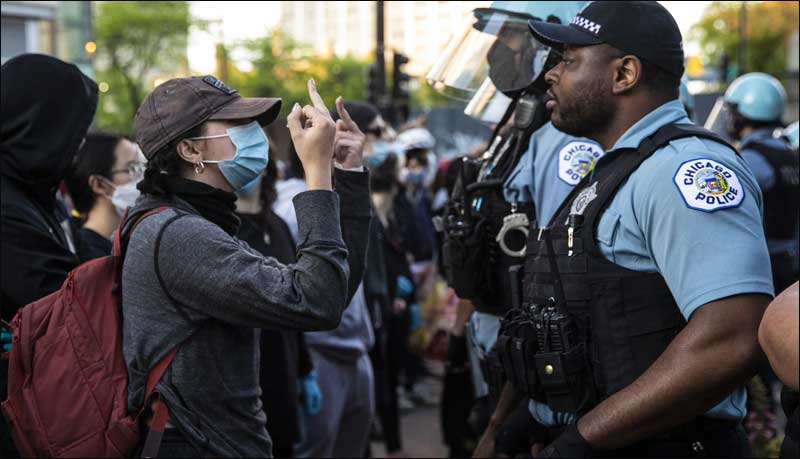
Was I at risk of becoming a bit of a misanthrope during the year of the SARS-CoV-2 pandemic? Disliking almost all the political currents in my society? The left and the right? “Social justice” activists and “Make America Great” partisans? The extreme partisanship? The denouncing of others, and calling for them to be “cancelled”? The scolding, the moralizing. It seemed a black hole of negativity. Nothing good was going to come from this, I could see. It is a country with very little social trust. But the pandemic made it worse.
So I found myself increasingly isolated and alone in public life. I could see next to nobody worth following. I refused to commit in any direction. And I was paying less and less attention. I kind of liked it that way. I was slipping away from the world and the concerns of the world. Most of my life was already behind me. I would be careful how I spent what was left.
It was much like this before the pandemic arrived to American shores, too. Maybe the defining moment in this life trend was when I deleted all my social media accounts. True, I would lose touch with many of my former students and acquaintances by turning my back on social media, but anyone truly important to me I would keep up with in real life.
Embrace real life and get out and see the sun. Ignore the Internet and sitting inside in front of screens. That is what I urge you, dear reader. A good rule to strive for…
As for me, I would get my girls raised through high school, finish up my last few years at work, and increasingly withdraw and retire from the world. Through vigorous exercise, I would earn my appetite and good night’s sleep. I would hold my family and buddies close to me, and ignore almost all the rest.
In this way, even with this pandemic raging, I had never been happier in my skin than now. If there were serious negatives, it was overall a good time for me. I carefully calibrated what was important to me, and not. I pursued the important fixedly. Simplify, simplify, simplify.
I am the captain of my destiny. I have my friends and fitness; the two are linked. I have my health and family. I have my books and writing; there is always classical music. I have almost everything I need, and the future looks bright. My work is work, and I’m seven years away from my pension. I have 27-years of teaching under my belt. When I am done, I will have earned my retirement.
More than once I wondered if this pandemic lifestyle of free-time and exercise was really a dress-rehearsal for my post-retirement reality. Is this how I would live after I reached the age of 61 and a half? If so, I like it! Retirement awaits me. I will be ready.
Here is a telling anecdote: I played in a tennis tournament in March 2021 during the time between when I had my first COVID vaccine shot and my second. These tournaments always worry me because it means A LOT of tennis in one weekend, especially if you are winning. The prospect of injury always looms large, especially if you are older. But in this tournament I played five matches in two days, made it to the finals with my partner, and my body held up just fine. I played high-level competitive tennis, and I played well all the way through the finals. So much sprinting on concrete tennis courts, yet I remained uninjured. All the fitness work I did in that past year paid off. It was a weekend where I felt good about myself. I earned these results. I was with my friends and enjoyed the camaraderie. I was able to play a sport I have loved since I was a child. I felt strong and happy. Confident. Ready for whatever came next. Good or bad.
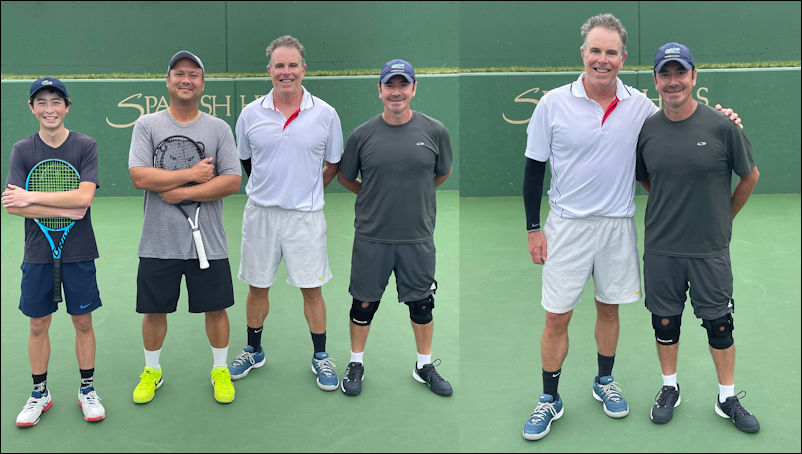
Julio and I enjoy a successful weekend of competitive tennis and easy friendship.
Physically and emotionally, I was in fine shape after one year as quarantine approached its end.
But the importunate will still be trying to piss in my ear. Even as the COVID numbers continue to decline, there will be those indoors neurotic mofos still in full-emergency mode. “Wear a mask! Even better, wear TWO masks!” “Stay home and stay healthy!” “Keep athletic gyms, church services, and movie theaters closed!” You will see these people wearing masks years into the future. You will see them wearing one while alone in their cars, with no risk of infection around. The amygdala will continue firing semi-continuously, as they are stuck in “fight-or-flight” mode indefinitely, and the medial prefrontal cortex will be helpless to apply the brakes and re-adjust risk to adapt to post-pandemic life.
No matter if this is terrible for their mental and physical health, they will remain fixated. They will remain uneasy in crowds — “The germs! The germs!”— and persist in “social distancing.” It seems common-sensical that one would limit the risk in any activity, and then get on with life and engage and thrive. The Coronavirus neurotics will obsess on the risk, and fail to get on with life. Being creatures of habit, many will continue with pandemic life patterns of isolation and caution out of fear of contagion and illness. They will be indoors on their smartphones fretting nearly all the time, outdoors and active almost never. This is unhealthy. They will remain in full emergency mode, with little release and less calm. “The virus!” “The racism/sexism/classism/ableism!” “The climate change!” “The cisheteronormative white males”! “The government did this!” Or “The government didn’t do that!” It will all be too much. The anxiety will exhaust them. They will burn out. They will grow haggard. Even desperate. Despairing.
When I hear some person unhinged in this way has committed suicide, I hope I will feel sorry for them. But probably I won’t. Since when did America become a nation of such whiny bitches?
So am I a misanthrope?
Maybe.
But the political culture in the United States is poisonous right now, and so I will strictly limit how much time and attention I give to it. Not that I will completely ignore public life, but I will come close. To do otherwise seems counterproductive. It is like hitting your head against the wall. I’ll do something else, thank you. This is what it means to live in a country with “low social trust.”
I will leave this pandemic with a particularly bad taste in my mouth for public health departments. It seems the idea of closing down huge swathes of the economy and urging Americans to stay home indefinitely was to control the spread of the Coronavirus, prevent health care systems from being overwhelmed, and thereby save lives. Only then would all the economic and mental health wreckage from a lockdown be warranted. But it seems in Southern California we had strict lockdowns with the consequent self-induced economic and mental health meltdowns, AND we still suffered widespread virus spread and large numbers of sick and dead. Did our public health policies give us the worst of both worlds? Were they caught off guard and performed poorly? They locked down not only the elderly and the vulnerable, but also the young and the healthy, too? Were my daughters poorly served in losing a full year to quarantine? How many kids in the United States died of COVID-19 in 2020? Were the lockdowns necessary? Or were they an overreaction? In the end, were they more harmful than helpful?
Five trillion dollars in government deficit spending? 530,000 Americans dead? Schools closed for one year? Livelihoods lost and mental health stressed everywhere? This was handled well? The politicians who ordered the lockdowns? The public health officials who advised them? In the complicated and difficult moments of an emergency, did they make the least-bad choices available to them?
When the butcher’s bill is paid in full, we shall see. Historians will judge, but I have my suspicions.
In the future I will look at the Centers for Disease Control, as well as the California and the Ventura County Departments of Public Health, and almost assume they are the “enemy” — I will have almost a knee-jerk reaction against them, as a result of what happened in 2020. If I come across some public health professor somewhere, I will assume the worst. If on a college campus in Anywhere USA, I will cross the street rather than walk too close to the school of public health. Population lockdowns, economic wreckage, and sickness and death. No thank you. Public health officials may explain they were just doing in 2020 what they thought was necessary to save lives. But was anything they suggested — physical isolation, wearing masks, hotlines to report violators, or closing down society — essentially any different than what public health had to offer in 1920 during the Spanish Flu epidemic, or during the Black Death outbreaks of 14th century Europe? This is all public health had to offer?
The public health devotees might claim that in the face of the emergency of a deadly virus, what do my civil liberties matter? I would argue that my civil liberties matter to me. The ability to leave my house and for my family not to be asked to self-incarcerate for months on end matters. Previously, I had no opinion about public health departments good or ill. Now they have come to mean restricting my life in the name of “the public good,” and probably not making the situation much better. Events in 2020 have made me a bit of a libertarian, observing the clumsiness of the state. Next time something similar occurs, if there is a next time, I am not sure I will go along peaceably with government lockdowns. Was I too tractable during this crisis? I’m armed, as are some 44% of American households. Even to a layman like me, it was clear public health failed spectacularly against the Coronavirus. From the earliest days I always knew those in charge at all levels were making it up as they went — that nobody really knew what they were doing.
The shining exception to this were the vaccines engineered to protect us from the SARS-CoV-2 virus. To develop and test these advanced vaccines in record time, and then to manufacture and ship them everywhere in our extensive country and inject them into the arms of hundreds of millions of Americans — that was impressive.
At any rate, the past year of 2020 has been a lacerating one for many. So this is what I predict moving forward: with the pandemic ending, Americans will compensate in 2021 by going on a splurge of spending, visiting, traveling, and partying.
Or at least those who have money saved from being cooped up for a year with nothing to spend it on, which equals a lot of people. On the other hand, those who lost their jobs or businesses during the pandemic will spend years trying to dig themselves out of the financial and/or mental health hole they are in. This pandemic has been capricious in who it hit — some lost almost everything, while others have never done better — depending on whether the virus and the government restrictions impacted them or not, and how hard. And there is enormous variation in temperament and resilience; individuals react so differently in a crisis: some hang in there, others don’t. It is strange. In 2020 nobody was expecting a global pandemic. Some won’t survive it. Will it happen again? A new virus and another quarantine?
Who knows? The future is uncertain. I’m ok with uncertainty. Maybe that is why I experienced less anxiety than did some others during this pandemic.
But this much is certain: people have short memories. Just as the carefree Americans in the “Roarin” 1920s had little desire to revisit the sacrifices and headaches of WWI or the Spanish Flu Influenza epidemic which had just ended, when the Coronavirus outbreak ends few will want to remember the awful year of 2020 — or live anything like it again, God forbid. Turn the corner on this grim time and don’t look back, good riddance.
But there were plenty of lessons to be learned for me personally in the past twelve months. There was much post-traumatic growth and I’m grateful for it. And so I am glad I wrote down these pandemic diary essays. I want to remember the lessons and the times.
“Pandemic Diary, I: The Crucible — Hard Times and Stress; Mental and Physical Strength”
June 18, 2020
“Pandemic Diary, II: My Intellectual Diet During Quarantine”
August 7, 2020
“Pandemic Diary III: Mile 18 of the Coronavirus Pandemic Marathon”
November 8, 2020
“Pandemic Diary IV: The COVID Winter —
‘Control what you can control, and let the rest go.’”
December 3, 2020
“Pandemic Diary V: The End in Sight”
February 23, 2021
Let my diary essays serve as a chronicle for my children — and their children — when their memories of our family and the pandemic fade, as they will, and they wish to remember history — how 2020 and the Coronavirus crisis was for us, and how we tried to adapt and make it through.
There is a Buddhist mantra: “Even a rock can become a teacher.” Similarly, even a pandemic can be a teacher. Hard times like one encounters in a deadly epidemic can be a particularly good teacher —
— if you are willing to reflect and learn, my precious Julia and Elizabeth, if you can adjust your attitude and behavior, if you are open to what the universe has to teach, my beautiful daughters. “Control what you can control, and leave the rest.”
Being an effective teacher means always remaining a humble learner. So I did my best during the epidemic of 2020 to learn. To confront change and to adapt, innovate, and overcome. To rise to challenges and breed what I need.
I write this essay for you, my beloved daughters.
We made it through 2020. You have made it through hard times before, and you can do it again.
Because hard times will come again. And good times, too.
Patience, perseverance, courage, and faith. Your life is a gift from us, so use your precious life — your time, energy, and attention — as best you can. You are stronger than you think. Smarter than you believe. Eschew fear. Be brave, my girls. Always be brave.
Your mother and father love you both so much.
Amen.
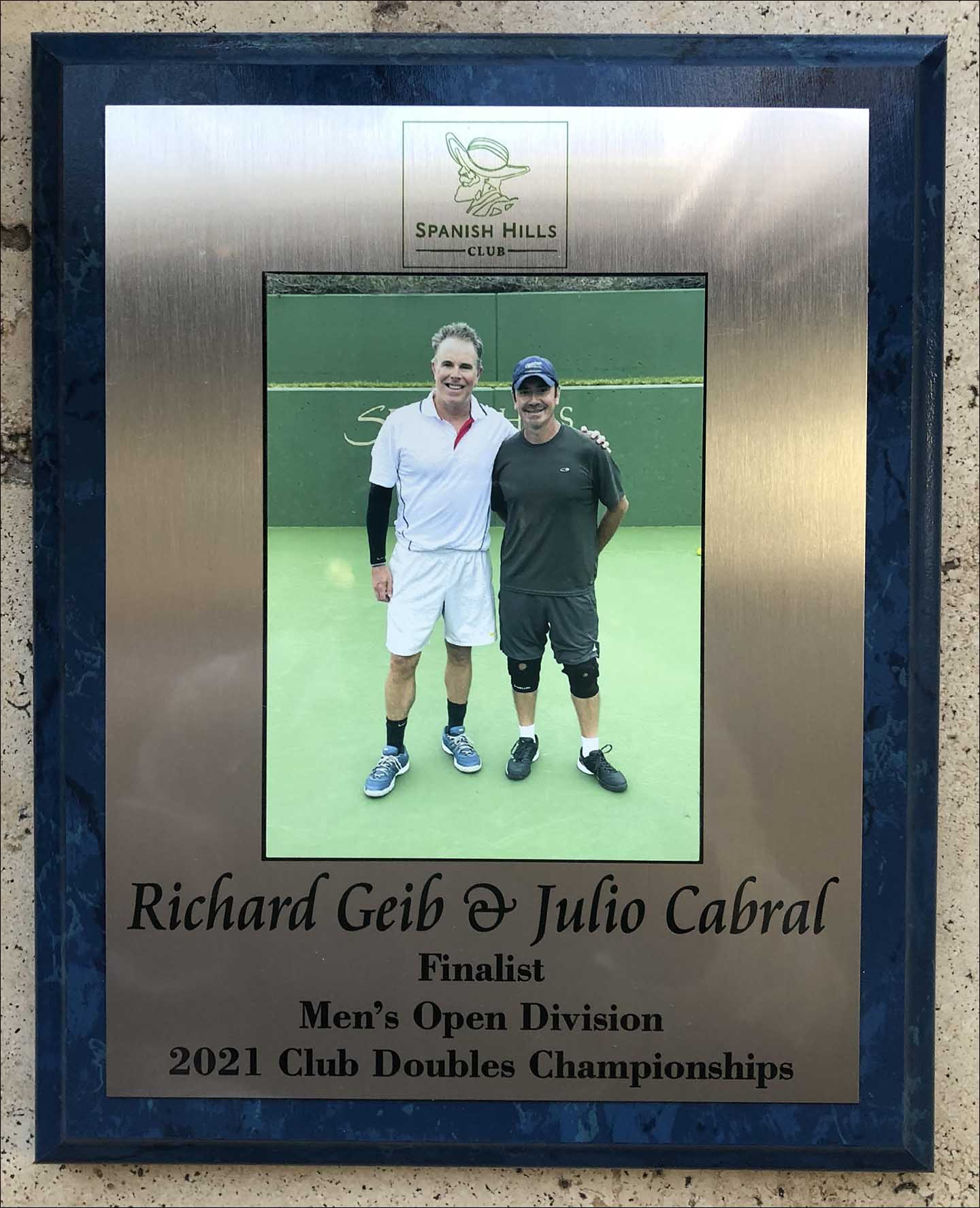
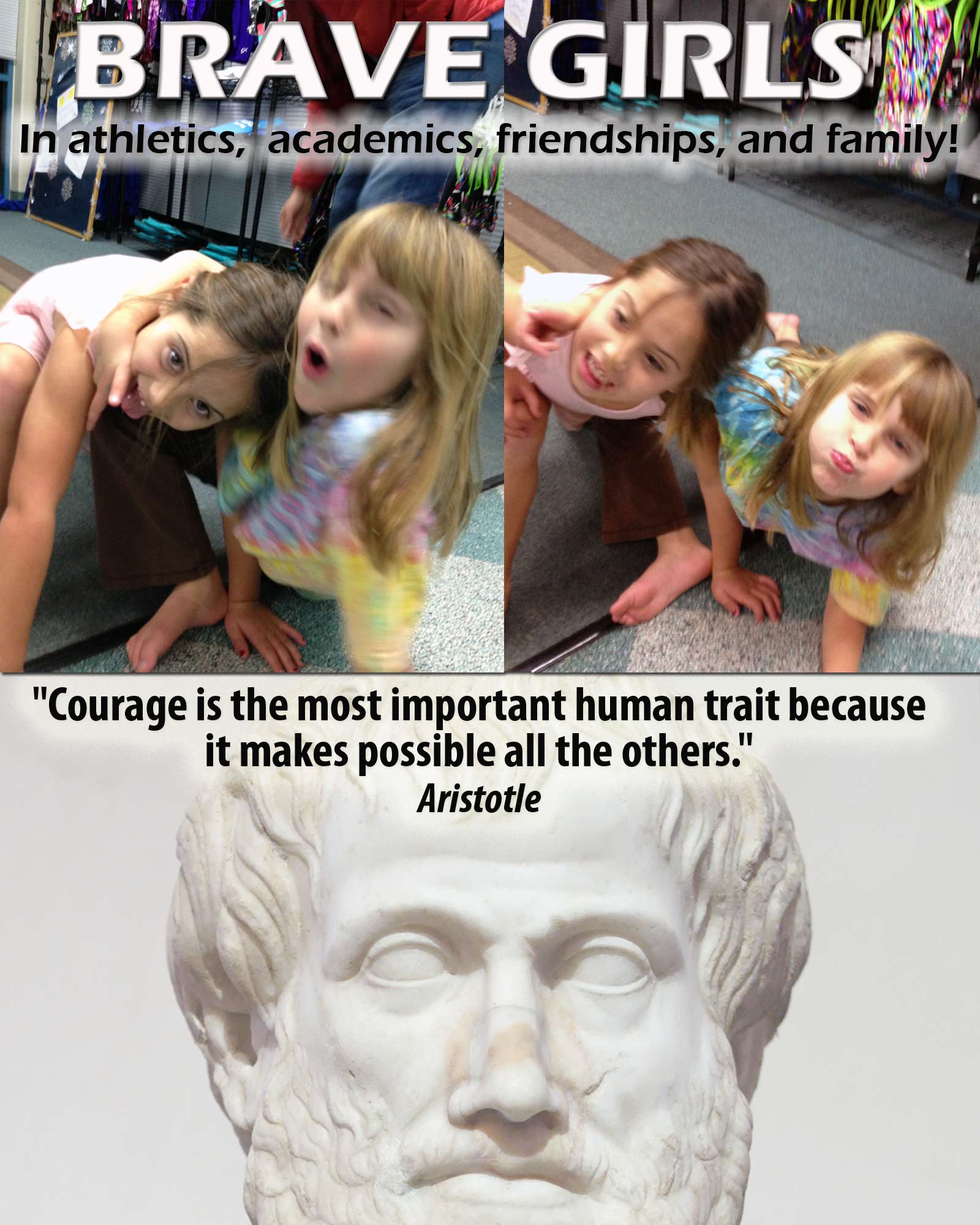
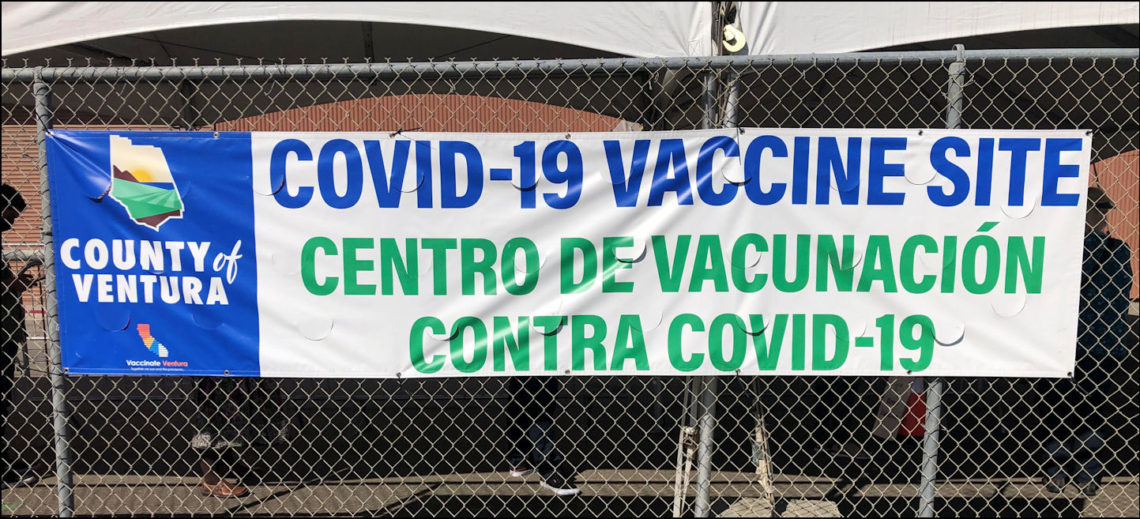


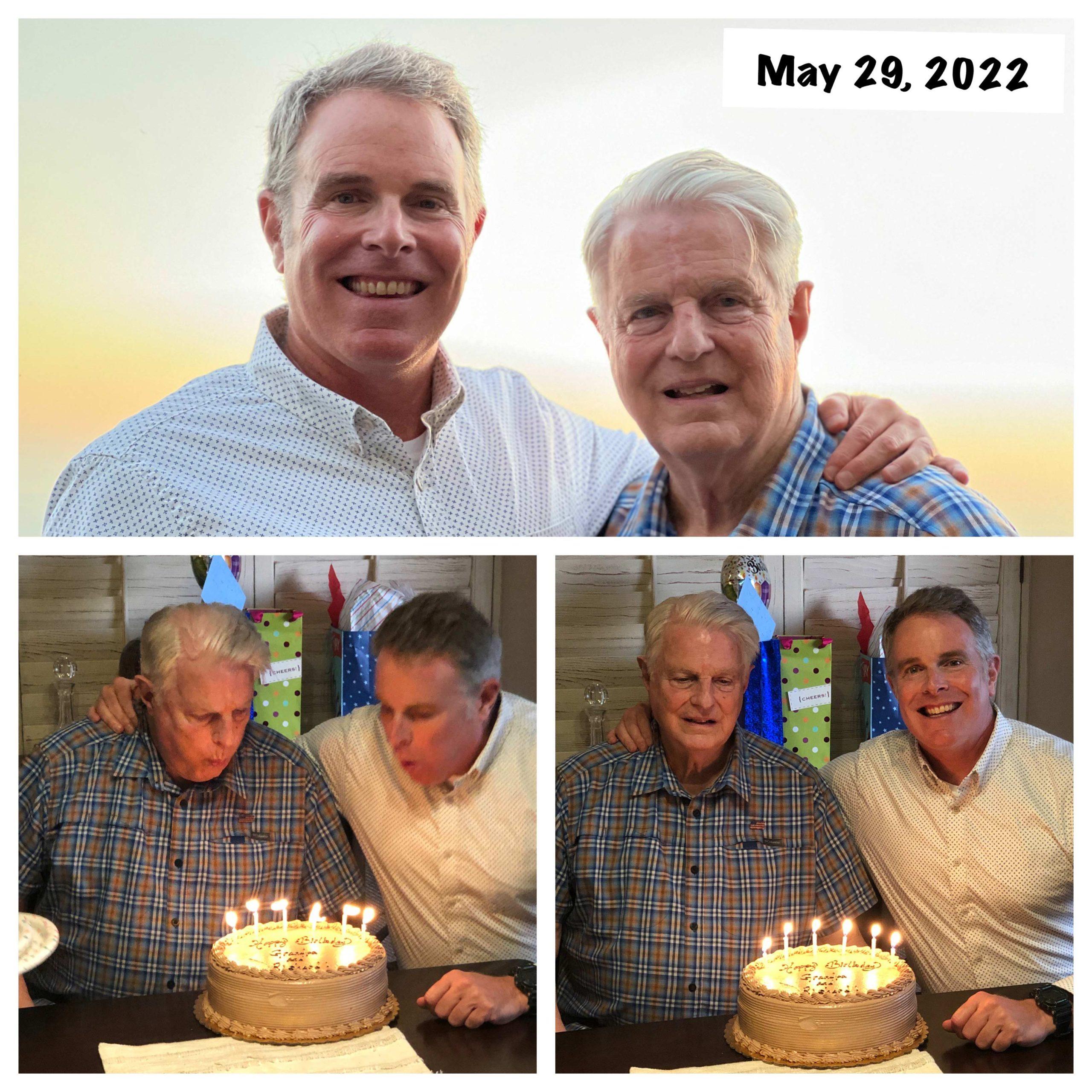
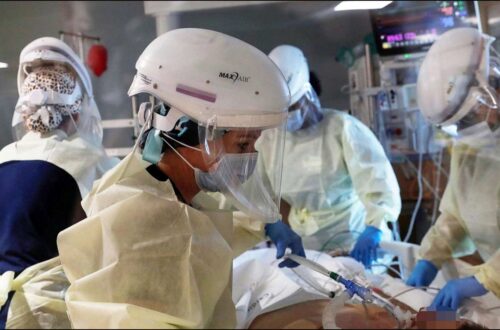
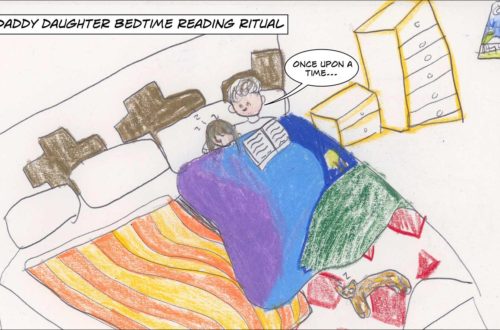
5 Comments
Steve
What about healing? People need to heal as the pandemic eases and ends.
rjgeib
Heal if you want. Or not.
Jay Canini
COVID was a tricky disease since a lot of people didn’t feel symptoms, but that meant the disease could spread widely through carriers and it made just enough people sick to the point where it could overload healthcare systems : this happened in northern Italy where doctors had to choose which people received treatment and which didn’t and were left to die. Also when a hospital is that overloaded it meant taking care of heart attack victims/car crash victims difficult.
That is why the Chinese really struck down on Wuhan when the disease started surfacing there. That’s why people had to put in lockdown mandates and mask mandates.
Anger can be used in a constructive way and in my opinion was warranted (particularly as many governments were negligent in how they handled COVID) but I agree anger shouldn’t totally consume somebody nor someone should allow it to destroy them. Pandemic time had been used constructively to better oneself and I’m glad to see you handled it well!
Luna
Not wearing masks while playing tennis during a global pandemic? Seriously?
rjgeib
Next to nobody wears a mask while playing tennis outdoors. So fuck you. And fuck off.